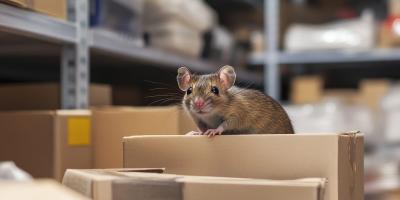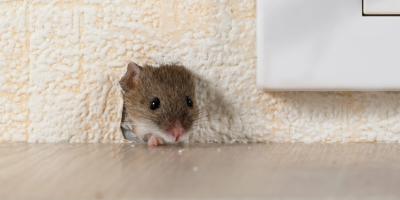Comprehensive Pest Proofing: Inside and Out

Utilize Exclusion Methods for Optimal Pest Prevention
Incorporating exclusion techniques is one of the most effective ways to minimize pest activity and enhance your pest management strategy. Exclusion methods block pests from entering a building and prevent their movement within. By limiting access and eliminating potential harborages and food sources, exclusion provides long-term control and decreases the need for chemical treatments. Accreditation programs like LEED and the National Organic Program often prioritize non-chemical methods as the initial step in pest control, making exclusion an ideal choice.
Pest proofing demands careful attention, especially for smaller pests that can exploit even the tiniest openings. The accompanying chart demonstrates the various pests and the size of gaps they can navigate. Effective exclusion requires sealing openings smaller than those listed to keep pests out.

Choosing the Right Materials
Many pest-proofing materials are readily available at hardware stores, including screens, sealants, and door brushes. Specialized products, such as Xcluder™ stainless steel mesh, are designed specifically for pest prevention. In food facilities, it's crucial to choose sealants that are appropriate for the surface, the size of the gap, and meet food-grade standards. Various sealers, caulks, and sealants are suited for different types of cracks and surfaces.
Door Exclusion Techniques
Effective door exclusion often involves adjusting timing mechanisms as well as using appropriate materials. Doors should be maintained in good condition, including automatic openers that should be set to stay open just long enough for people to pass through, usually around six seconds after the sensor detects movement. Regularly check and adjust automatic doors to ensure they close properly and make necessary adjustments to sensor sensitivity to prevent pests like birds from triggering them.
When doors need to remain open for ventilation, use screens to block pests. Overhead dock door screens are available from various manufacturers, with those that fit on the door track being particularly effective. Ensure that doors are tightly sealed to prevent insects and rodents from entering. A simple pencil test can help determine if a mouse-sized rodent can pass through any gaps; if so, additional sealing measures are required. Don’t forget to address seals around dock door plates and other potential entry points.
Implementing Multi-Layered Defenses
Incorporating multiple layers of protection can significantly enhance your pest control efforts. Vestibules with inner and outer doors provide an extra barrier, while rapid roll-up doors can effectively separate high-exposure areas, such as food processing zones, from less sensitive areas, like receiving docks. When designing or renovating facilities, consider these layered defense strategies. This approach is particularly beneficial in high-pest-pressure environments, where building pressure issues are present, or where product sensitivity is paramount.



